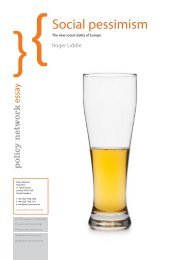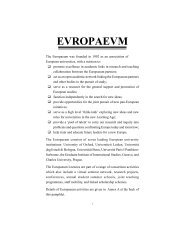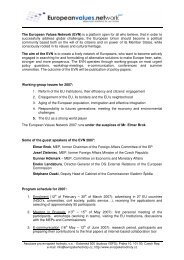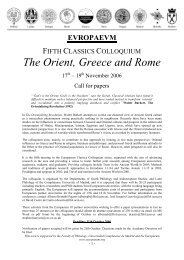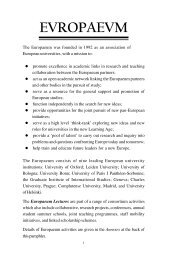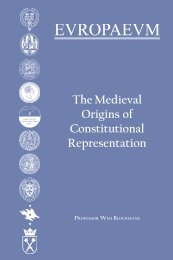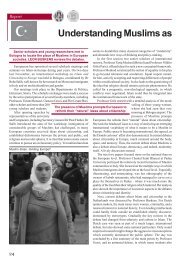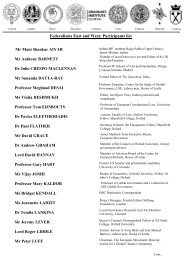Authors Iain Begg | Gabriel Glöckler | Anke Hassel ... - The Europaeum
Authors Iain Begg | Gabriel Glöckler | Anke Hassel ... - The Europaeum
Authors Iain Begg | Gabriel Glöckler | Anke Hassel ... - The Europaeum
You also want an ePaper? Increase the reach of your titles
YUMPU automatically turns print PDFs into web optimized ePapers that Google loves.
terms only very slowly and as a percentage of total commitment<br />
appropriations is expected to fall from 36% in 2007 to 32% in 2013.<br />
However a large part of the expenditure on rural development, the second<br />
arm of the Common Agricultural Policy, goes to farming. This expenditure<br />
has increased rapidly over the last few years as it has been realised that the<br />
development of rural areas is a key to a healthy farm economy.<br />
Cohesion policies, designed to support the less prosperous regions and<br />
member states, account for around 36% of total budget commitments<br />
throughout the whole period 2007 to 2013. This allocation still contains a<br />
large proportion of funding for regions in the EU-15, some of which is<br />
transitional funding which will run out before the end of the current<br />
financial perspective. This suggests that cohesion policy funding could fall<br />
in the next financial perspective, both in nominal terms and as a percentage<br />
of total funding, although the accession of Turkey would undoubtedly lead<br />
to a move in the opposite direction. Spending on cohesion, like that on the<br />
CAP, has come under attack from some of the net contributors to the<br />
budget, because a large share of the funding is still going to regions in<br />
rather rich member states.<br />
Around 6% of the annual budget is spent on administration, including<br />
staffing and pension costs.<br />
<strong>The</strong> most important policy areas for the future of the European Union<br />
share the remaining 15% of the budget. This includes those policies<br />
considered essential for the future competitiveness of the Union, such as<br />
research and development, education and training and energy and<br />
transport networks, the burgeoning area of freedom and security and<br />
justice, EU foreign and neighbourhood policy and of course climate<br />
change. Union activity in all of these areas is increasing at a considerable<br />
rate, but this is not reflected in the budget. <strong>The</strong>se policies are also those<br />
for which majority support can be found amongst the citizens of the<br />
member states.<br />
<strong>The</strong> structure of the budget and of the financial framework depend partly<br />
on the rules under which they are drawn up, some of which are extremely<br />
complex. Apart from the normal distinction between payment and<br />
commitment appropriations, until the Lisbon Treaty is ratified, the budget<br />
still differentiates between compulsory and non-compulsory expenditure.<br />
This insulates CAP spending from effective parliamentary criticism. <strong>The</strong><br />
budgetary treatment also is conditional on the competence of the Union to<br />
act in certain fields. <strong>The</strong> Common Foreign and Security Policy is an<br />
66<br />
After the crisis: A new socio-economic settlement for the EU



